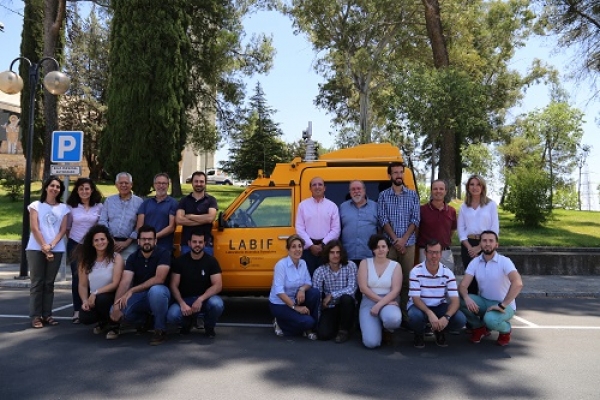Fires are one of the main threats to forests as patrimonial assets. According to data from the Ministry of Agriculture, in Spain there are an average of more than 17,000 accidents per year, affecting 113,000 hectares. Although most are contained, and do not spread, uncontrolled fires inflict enormous economic and landscape losses from which it is difficult to recover.
The causes of these types of accidents are multiple. The increase in forests' flammability due to factors related to global change, such as rural depopulation, the increase in temperatures, and the dearth of rainfall, due to climatic shifts, are just some of them. Most incidents, however, have a clear common denominator: human intervention. More than 90% of fires produced in Mediterranean forests are man made.
In any case, forest fires are complex problems involving multiple elements and, as such, require complex solutions. The 'Cilifo' projects aim to address this problem from different angles to reduce the number of incidents and improve governments’ response capacity in the face of these incidents.
This is a European cross-border cooperation project -POCTEP- between Spain and Portugal in which the University of Cordoba is participating, along with 13 other partners. The objective: to deal with fires in Andalusia, and in the Algarve and Alentejo, two regions of Portugal that have been hit hard in recent years.
According to the project manager at the UCO, Francisco Rodríguez y Silva, 'Cilifo' features a broad array of actions, focused on infrastructure improvement, highly specialised training, and research aimed at improving fire management. With respect to this last block, the University of Cordoba will provide research related to the evaluation of the combustibility of the vegetation present in the forest landscapes of Western Andalusia, as well as their classification and cartographic digitalisation.
With all this information, a complex mathematical model is being developed, aimed at predicting the difficulty of extinction operations depending on the behaviour of the fires and the capacities offered by the infrastructures supporting extinction activities. It is an algorithm that has already been validated by the AGR 221 research group and that will now be refined with information from the different provinces participating in the project. The program includes data such as the density of trails, the nature of terrain, the type of fire, and even the frequency with which water can be dropped by fire-fighting aircraft.
All the data collected, according to the director of the project at the UCO, will help to make decisions and to protect the safety of firefighters. In addition, it will make it possible to undertake preventive actions in areas where there is a high likelihood of combustion, to bolster the territory's self-defence capacity.
The project, however, is also being deployed through other lines of research. The analysis of previous fires, and the study of vegetation after them, are just a couple of these. The UCO is also working on updating the SINAMI model, the national system for the economic analysis of forest fires, which makes it possible to reduce the economic impact of these incidents and the expenses related to extinguishing them.
The endeavour, which will conclude in 2021, will culminate with the creation of the Iberian Centre for Forest Fire Research and Prevention, a work of infrastructure sponsored by the Junta de Andalucía (regional government). To be located in Huelva, it will aim to unify criteria and centralise the process of high-level training.
Jueves, 29 Agosto 2019 13:55
CILIFO | Mathematics to Fight Forest Fires
The UCO is working within the framework of the CILIFO project on an algorithm that will predict the behaviour of forest fires
Publicado en
Nature science


